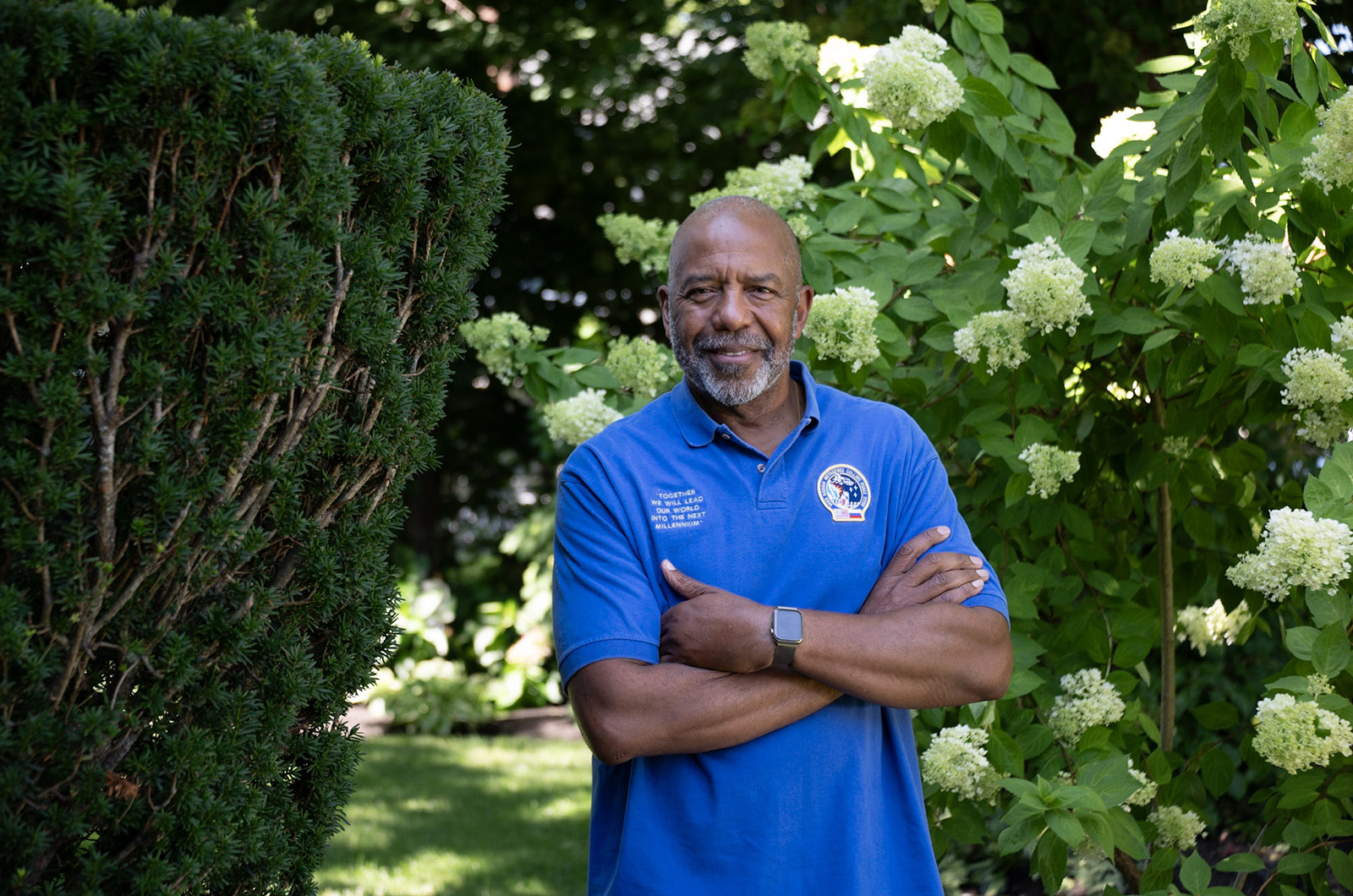On Feb. 9, 1995, Dr. Bernard Harris Jr. pulled on his 350-pound space suit and readied himself to do something he had been dreaming about all of his life: walk in space.
But first, the NASA astronaut needed to wait in the suit for four hours so his body could prepare for the launch out of the shuttle and into space.
“The suit is 100 per cent oxygen, so you have to sit there for hours and breathe the nitrogen out of your body,” said Dr. Harris. Otherwise, the lack of pressure in space would cause nitrogen bubbles in his blood and make him sick.
When the hours of waiting were finally up, Dr. Harris made history as the first African American to perform a spacewalk.
This weekend, Dr. Harris, who owns a summer home in Oak Bluffs, will help bring the complex astronaut experience and the wonders of space exploration a little closer to the Vineyard at From STEM to the Stars, a two-day STEM (science, technology, engineering and mathematics) education experience.
Hosted by the National Math and Science Initiative (NMSI), Blue Origin, NASA and Raytheon Technologies, the event will feature a panel of several former and current astronauts, an interactive space capsule and many STEM-related children’s activities. It will be held at Alley Waban Park in Oak Bluffs on Aug. 4 and 5 from 11 a.m. to 4 p.m.
“One of the things that I’ve always wanted to do since I started living [seasonally on the Island], is bring this community my love for space and my love for STEM,” said Dr. Harris.
Dr. Harris’s early interest in school and STEM formed when he was six years old, shortly after his parents divorced. His mother had a college degree in education and quickly found opportunities to support herself and her children. His father, whose education ended at 10th grade, struggled.
“When she decided to leave [him], I realized that she had options and he didn’t,” said. Dr. Harris. “It was my first lesson in the value of education.”
Moving with his mother to Navajo Nation in Arizona, he discovered a sense of adventure that would later propel him out of the Earth’s atmosphere and into its orbit.
“On the weekends, I would get together with other kids and explore the surrounding mountains,” he said. “I think that it all started with this notion to figure out, ‘what’s on the other side of that hill? What’s down in that valley?’”
His curiosity moved far beyond the wilderness of Navajo Nation and into space when, at 13 years old, Dr. Harris watched through his television as NASA astronauts Neil Armstrong and Buzz Aldrin walked on the moon. He was hooked.
But at the time, he knew that his chances of making it to space were slim. NASA was not yet ready to integrate, he said.
“It doesn’t take a rocket scientist — no pun intended — to figure out that this notion of a Black kid trying to follow in the footsteps of these wonderful men . . . was unrealistic,” he said.
Dr. Harris sidelined his aerospace career aspirations after graduating high school and enrolled as a pre-med student at the University of Houston. The choice seemed more logical, he said, and the idea of becoming a doctor excited him, too.
A biology degree, medical degree and Mayo Clinic residency later, Dr. Harris finally combined his two passions and became a clinical scientist and flight surgeon at NASA’s Johnson Space Center.
Just four years later in 1991, Dr. Harris boarded a shuttle and took off into space. He returned to space in 1995 to complete his spacewalk and help construct the International Space Station.
“The day before the spacewalk, we got a call from President Clinton’s office, saying that he wanted to interview all three of us who were on the mission,” said Dr. Harris. “I was really sweating before the call . . . but I told him, ‘I may be the first [African American], but I will not be the last.’”
Since the day of his spacewalk, several more African Americans have traveled to space, and Dr. Harris is determined to encourage others to embark on STEM careers by improving instruction and education around the country. He co-founded NMSI 16 years ago to engage students with STEM and help teachers learn to effectively teach the material.
This is NMSI’s first year organizing From STEM to the Stars, but Dr. Harris is hopeful it will evoke scientific curiosity from Islanders and visitors alike and return for a second year.
“Back in the day, if Black people went to college, it was typically to go into education or be a minister,” he said. “Well, this mission to improve high quality STEM education, I consider it to be my ministry.”






Comments (6)
Comments
Comment policy »